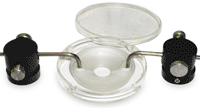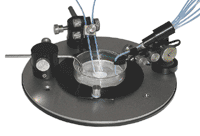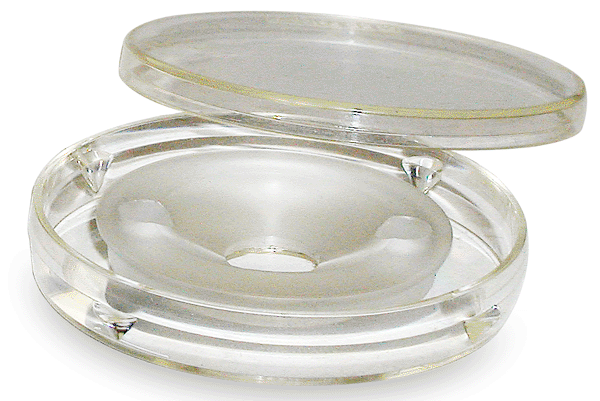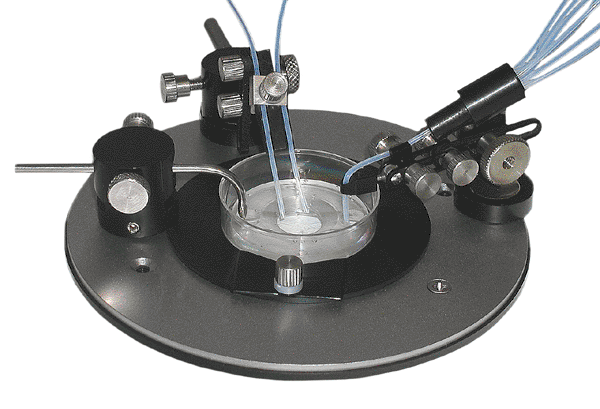|
|
| |
|

Perfusion Insert for 50mm BD Falcon and Willco Glass
Bottom dishes, PCCS2
Can be used with 50mm dishes to form perfusion chamber around your sample placed on glass bottom.
Facilitates perfusion
inside the dish. Separate inflow and outflow compartments prevent
bubbles from entering the working compartment and provide smooth
perfusion.
Can be used with both 50mm BD Falcon dishes, and will also fit into 40mm well of 50mm Willco dishes.
Can be used with perfusion
systems and cooling / heating stages for 60-50mm dishes.
See published sample recordings,
and Sample publications.

Glass Bottom Petri Dish Perfusion Set, MA-MTH or IMA-MH
Includes three miniature holders to position inflow and outflow tubing
(and optional accessories - electrodes or probes).
Requires a microscope adapter.
Specifications: |
Outside diameter: | 36.7mm |
Height: | 5.5mm |
Working volume: | 10mm diameter, approx. 100 microl |
Click on catalog numbers below to purchase online.


Required accessories: microscope adapter.
Optional accessories: perfusion system,
temperature control,
flow control.
Download PDF catalog.
|
|
Bioscience Tools
ph: 877-853-9755
fax: 866-533-7490
email: info@biosciencetools.com
|
PRICES AND OPTIONS |
PCCS2 |
$150 |
Small Volume Laminar Perfusion Chamber
|
PCCS2-PDI |
$125 |
Adhesive layers, pack of 50, for use with PCCS2 perfusion chambers. |
|
MA-MTH, IMA-MH |
$195 |
Miniature Adjustable Holders Set
|
See published sample recordings,
and sample publications:
15
Evaluation of Optogenetic Electrophysiology Tools in Human Stem Cell-Derived Cardiomyocytes.
Frontiers in Physiology 8 October 2017;
14
A neural network underlying circadian entrainment and photoperiodic adjustment of sleep and activity in Drosophila.
Journal of Neuroscience, 36(35), 9084-9096. 2016;
13
Optogenetic Control of Gene Expression in Drosophila.
PLOS one, September 18, 2015;
12.
Analysis of functional neuronal connectivity in the Drosophila brain
J Neurophysiol. 2012 Jul 15; 108(2): 684–696;
11.
Differentially timed extracellular signals synchronize pacemaker neuron clocks.
PLoS Biol. 2014 September; 12(9);
10,
9,
8,
7,
6,
1,
2,
3,
4,
5.
|
|